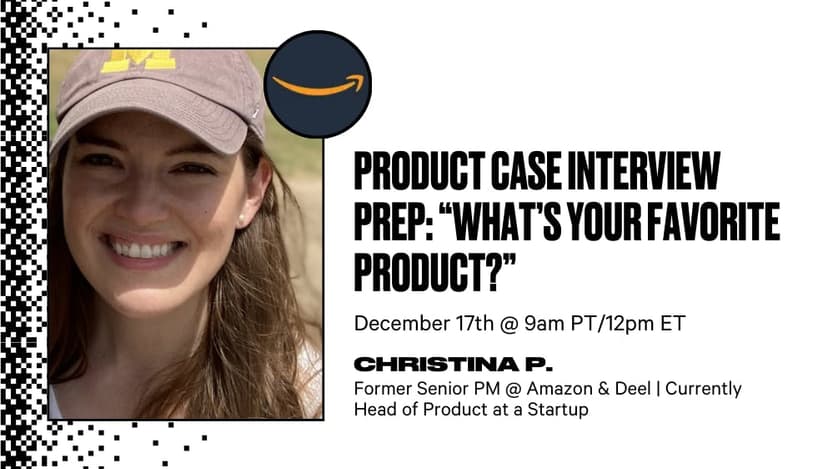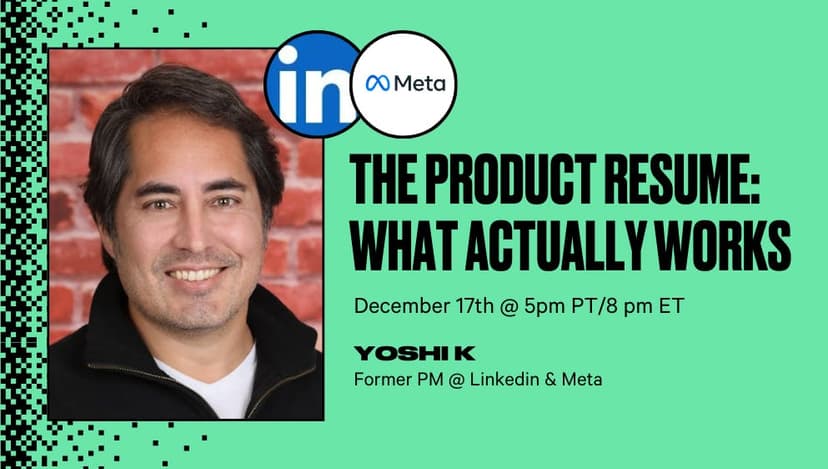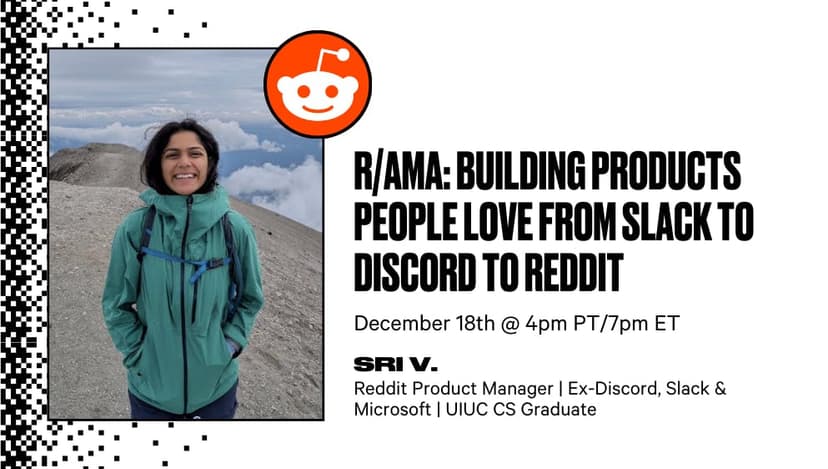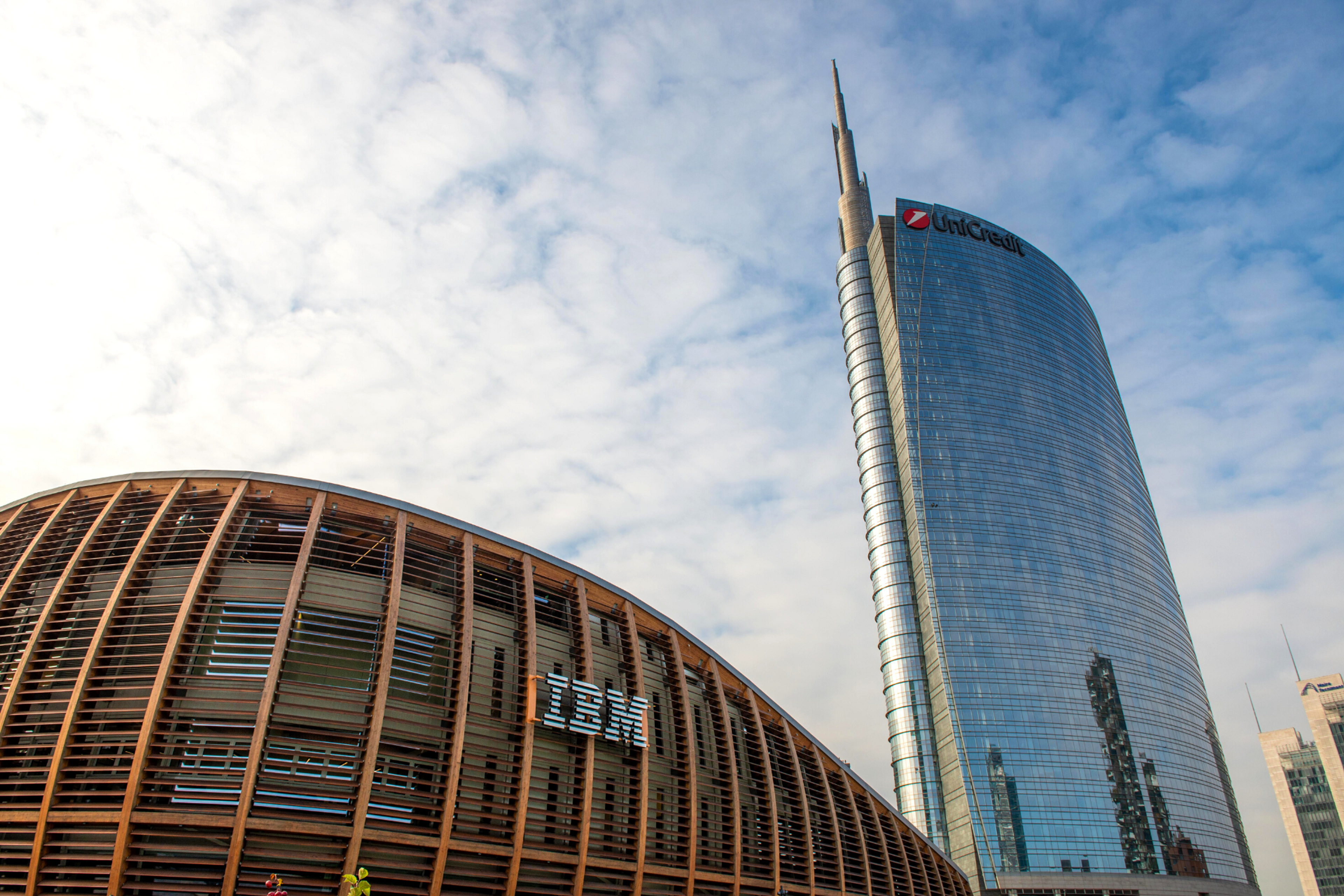NVIDIA Product Manager Interview: Process, Questions, & Tips (2025)
Ace the NVIDIA product manager interview with insider tips, a step-by-step guide to the process, and strategies to tackle NVIDIA interview questions with confidence.
Posted September 19, 2025

Join a free event
Learn from top coaches and industry experts in live, interactive sessions you can join for free.
Table of Contents
The NVIDIA product manager interview is a rigorous and competitive process designed to find top candidates who will drive the company's innovative products in AI, machine learning, gaming, and beyond.
Whether you're applying for a product manager (PM) role at NVIDIA, known for its leading-edge AI technology, or you're considering a similar position at one of the other top tech companies, it is essential to understand the interview process and what to expect. This article will walk you through it, together with the questions you might face, and tips to help you succeed.
Read: What is Product Management?
The NVIDIA Product Manager Role
At NVIDIA, a product manager (PM) plays a crucial role in shaping the future of the company’s groundbreaking products, including GeForce graphics cards and RTX chips. These products power everything from gaming to AI technology and autonomous vehicles. Your job will be to guide the development of these products, making sure they meet customer needs and keep NVIDIA ahead of the competition. You will work with a team of engineers, designers, and other experts to ensure the product is built right, launched successfully, and continuously improved.
What You’ll Be Doing as a Product Manager at NVIDIA.
A NVIDIA product manager is responsible for overseeing the entire product development process, from concept to post-launch. You'll need to prioritize features and decide what goes into each product release. You will also monitor market signals to keep track of competitors and customer feedback. Making sure that product lines, such as NVIDIA's RTX or NVIDIA's GeForce, meet the needs of customers while providing high stability and performance will be essential.
Read: How to Become a Product Manager (For Every Career Stage)
NVIDIA Interview Process
Getting through the NVIDIA can be challenging, but with the right preparation, you can make a strong impression. Here's a breakdown of the key stages:
1. Recruiter Phone Screen
The first step in the interview is typically a call from a recruiter. During this recruiter screen, you’ll discuss your background and motivation for applying. Expect questions about your experience, how you align with NVIDIA’s role, and why you're interested in working with NVIDIA employees.
2. Technical Phone Interview
Next, you’ll likely have a technical interview. This is where NVIDIA interviewers will assess your technical skills, such as your understanding of product sense, and how well you understand product development and engineering-focused features. You can expect questions about how you would tackle technical challenges and how your skills match NVIDIA’s product line.
3. Panel Interviews
Panel interviews are common at NVIDIA and involve meeting with a group of interviewers. These may include hiring managers, senior PMs, engineers, and other relevant stakeholders. The questions will likely cover a wide range of topics, including NVIDIA's product line, machine learning, and matrix operations.
4. Onsite Interviews
The next interview will be an on-site interview. For senior-level roles, you may be asked to visit NVIDIA’s headquarters or work remotely in an onsite interview. During this phase, you may present a product idea or case study that reflects the role you’re applying for. Be prepared to answer in-depth product manager interview questions about NVIDIA's RTX, GeForce, cloud gaming, machine learning, and deep learning applications.
Sample NVIDIA Interview Questions
Behavioral Questions
Behavioral questions are asked to understand how you handle real-life situations and challenges. Interviewers want to see how you’ve applied your skills in the past and how you might approach similar problems at NVIDIA. These questions help them gauge your problem-solving, leadership, and decision-making abilities.
Sample Question: "Tell me about a time you had to prioritize features for a product release at a tech company?"
Sample Answer: "In my previous role, we needed to decide which features to prioritize for a major product update. I collected data on user feedback, business goals, and engineering constraints. After collaborating with the cross-functional team, we decided to focus on improving performance and fixing critical bugs, ensuring we delivered a stable, high-quality release before adding new features."
Sample Question: "Describe a situation where you had to balance conflicting stakeholder interests. How did you manage it?"
Sample Answer: "I worked on a project where marketing and engineering teams had different priorities. The marketing team wanted to focus on new features for a cloud gaming platform, while engineering needed to address technical debt. I facilitated a series of meetings where we clarified business goals and agreed on a roadmap that balanced both perspectives, ensuring we maintained product stability and met business objectives."
Read: The 10 Most Common Product Management (PM) Behavioral Interview Questions
Technical Questions
These types of questions test your understanding of the technologies behind NVIDIA's products, such as GeForce, RTX, and deep learning applications. These questions assess your ability to understand complex technical concepts and apply them in the context of product management.
Sample Question: "How would you manage a cloud gaming platform that is struggling with latency issues?"
Sample Answer: "I’d start by analyzing the system’s architecture, looking for bottlenecks in the data flow. I would then collaborate with the engineering team to optimize server performance and reduce latency. We would also implement performance tests under different network conditions, ensuring that the solution maintains a consistent and smooth user experience."
Sample Question: "What’s your approach to improving real-time ray tracing performance in a gaming application?"
Sample Answer: "I would begin by assessing NVIDIA's RTX hardware capabilities to identify how we can optimize the rendering pipeline. After pinpointing inefficiencies, I’d work with engineers to implement algorithmic improvements and explore potential AI-driven solutions to reduce processing time, making real-time ray tracing more accessible and efficient for users."
Read: Most Common Technical Questions in Product Management Interviews
Product Sense Questions
Questions like these aim to evaluate your ability to think strategically about products, understand market needs, and make decisions that align with the company's goals. Interviewers want to see how you approach product design, prioritize features, and solve problems.
Sample Question: "How would you design a high-performance computing product for a new market?"
Sample Answer: "First, I would research the specific needs of the target market, looking at the computational challenges they face. After identifying pain points, I would work with the engineering team to design a solution that leverages NVIDIA’s strengths in AI technology and machine learning to differentiate the product. I’d also ensure it integrates seamlessly with existing NVIDIA hardware and offers scalability for future needs."
Sample Question: "How would you prioritize features for a new cloud gaming platform?"
Sample Answer: "I would prioritize features by considering user feedback, competitive analysis, and NVIDIA’s capabilities. Key features like low latency, smooth gameplay, and broad device compatibility would be top priorities. I would also ensure scalability for real-time ray tracing and AI integration to future-proof the platform as technology evolves."
Hypothetical Questions
Hypothetical questions assess your problem-solving abilities by presenting situations you may face as a product manager. These questions are designed to test your creative thinking, adaptability, and how you would approach unexpected challenges.
Sample Question: "What would you do if you were managing a product line that’s losing market share to competitors?"
Sample Answer: "I would begin by analyzing the data to understand why we’re losing market share. Whether it’s due to a product flaw, market trends, or stronger competition. I’d collaborate with the cross-functional team to identify key improvements and new features that would appeal to customers. After that, we’d rework the marketing strategy to emphasize our competitive edge, ensuring that our NVIDIA product can better meet user needs."
Sample Question: "How would you approach the launch of a new product in a highly competitive market?"
Sample Answer: "I would start by conducting a thorough market analysis, identifying gaps in competitors’ products, and defining our unique value proposition. I’d then align the cross-functional team, from engineering to marketing, on the product’s differentiators and key features. By focusing on NVIDIA’s RTX hardware and customer satisfaction, we’d create a clear and compelling narrative for the launch."
Note: Most candidates find it challenging to answer hypothetical questions, but with a structured approach and by using frameworks like RICE or CIRCLES, you can show your problem-solving abilities and strategic thinking effectively.
Read: The 50 Most Common Product Manager Interview Questions (2025)
How to Prepare for the NVIDIA Product Manager Interview
Researching NVIDIA’s Products and Culture
To excel in the NVIDIA product manager interview, you need to start by truly understanding NVIDIA's products. Dive into their GeForce and RTX lines and explore their AI-driven technologies. These products are at the heart of what NVIDIA does, and knowing how they fit into markets like deep learning applications will give you the edge. But don't just stop there. Take time to understand NVIDIA’s company culture. This company thrives on innovation, and showing that you’re aligned with their values of intellectual honesty and problem-solving will set you apart. The more you know, the more confident you'll feel in answering the toughest NVIDIA interview questions.
Reviewing Key Industry Trends
In your preparation, make sure you stay on top of market trends in deep learning, machine learning, and high-performance computing. These aren’t just buzzwords. They’re the areas where NVIDIA is making a huge impact, and understanding them will show your commitment to the role. You’ll need to understand how NVIDIA’s products influence industries like autonomous vehicles and gaming.
Studying Common Interview Frameworks
As a product manager, you'll often need to make tough decisions about product features and strategy. That’s why mastering frameworks like CIRCLES and RICE is a game-changer for your preparation. These frameworks provide structure and clarity, ensuring that you approach product sense questions with a strategic mindset. Understanding and applying these tools during your prep will give you the confidence to tackle strategy questions in your NVIDIA interview.
Practicing with Mock Interviews
Here’s the key to success: practice, practice, practice. Conducting mock interviews is one of the most powerful ways to get ready for the NVIDIA product manager interview. These sessions simulate the real interview process, so you get comfortable with answering both behavioral and tech questions. The more you practice, the more natural your answers will feel. Focus on articulating how you’ve worked with various teams, how you handled product challenges, and how you applied technical skills to solve problems.
More Tips for Success
Beyond the technical skills, you need to be ready to shine during the recruiter phone screen. This is where you get the opportunity to show the recruiting team who you are and why you’re a great fit for the NVIDIA role. Prepare, for example, questions about your past experiences in tech companies, especially where you've had to prioritize features or lead teams. Use this time to showcase your relevant soft skills, like leadership and decision-making. The recruiter screen is a first step in the journey, and how you handle it will set the tone for the rest of the interview. Remember, every interaction is your chance to demonstrate why you’re the right person to join NVIDIA’s innovative team.
Insights into the NVIDIA Culture and Expectations
At NVIDIA, teamwork is essential. The company values candidates who excel in working with diverse teams and can integrate different viewpoints to craft innovative solutions. In the NVIDIA product manager interview, you’ll likely face questions that assess how you manage team dynamics and showcase soft skills such as communication and leadership.
NVIDIA also encourages intellectual honesty and continuous innovation. They expect product managers to challenge assumptions and come up with fresh ideas. In your interview, be prepared to discuss how you’ve approached similar situations and how you integrate AI technology and machine learning into your strategies. Understanding their mission to advance high-performance computing and deep learning will demonstrate your alignment with their objectives. Showing how your skills contribute to NVIDIA’s competitive edge will be a key part of your success in the interview..
5 Expert Tips for Succeeding in the NVIDIA PM Interview
1. Highlight Your Ability to Prioritize Features and Manage Trade-Offs
In the interview, you'll be asked to make critical decisions about prioritizing features for products like NVIDIA's GeForce and RTX. Your ability to evaluate and balance engineering-focused features with customer needs and business goals will be key. Expect questions from NVIDIA interviewers that assess your decision-making in product development processes. Demonstrating your ability to manage trade-offs and involve a cross-functional team in those decisions will set you apart as a NVIDIA product manager candidate.
2. Deepen Your Understanding of NVIDIA’s Hardware and AI Technology
NVIDIA’s products, like NVIDIA's hardware, GeForce, and RTX, are central to their success in high-performance computing and deep learning applications. In the NVIDIA interview process, you will likely face technical questions about how AI technology powers their products. A profound understanding of matrix operations, real-time ray tracing, and machine learning applications will show your readiness to contribute to NVIDIA’s product line. Prepare for questions on how NVIDIA’s RTX and data centers fit into the broader tech ecosystem, and how you would leverage these technologies to enhance customer satisfaction.
3. Showcase Your Product Sense with Data-Driven Decisions
Here, your ability to make data-driven decisions is critical. In the NVIDIA interview, you may be asked to evaluate customer feedback, track adoption rates, and monitor market signals. Be ready to discuss how you would use data to prioritize features and track the success of product releases. Demonstrating product sense and a deep understanding of customer needs, while focusing on competitive edge, will help you stand out during the NVIDIA interview questions. Prepare to discuss how you would approach post-launch activities to ensure customer satisfaction.
4. Prepare for Hypothetical and Strategy Questions with a Structured Approach
Hiring managers will likely ask hypothetical questions to see how you approach strategy questions and solve complex problems. Use frameworks like RICE or CIRCLES to structure your responses, especially when discussing how you would approach cloud gaming platforms or new products in emerging markets. These frameworks will show that you understand how to make strategic decisions in line with NVIDIA’s role as a leader in AI technology and high-performance computing. Be ready to explain how you would develop strategies for products such as NVIDIA’s RTX to address customer needs in new or competitive markets.
5. Excel in Panel Interviews by Demonstrating Clear Communication and Leadership
During panel interviews, interviewers will assess both your technical skills and relevant soft skills, such as how you manage teams and communicate effectively. You’ll need to demonstrate your ability to lead cross-functional teams, collaborate with data scientists, and make decisions that align with NVIDIA’s product development process. Be prepared to discuss past experiences that showcase your leadership style and your ability to drive product stability and innovation. Show that you understand NVIDIA’s culture, where intellectual honesty and collaboration are central, and be ready to discuss how you’ve worked in a team to solve challenging problems.
The Bottom Line
Nailing the NVIDIA product manager interview is challenging, but with the right preparation, you can set yourself up for success. Make sure to understand NVIDIA’s products and technologies, sharpen your technical skills, and demonstrate intellectual honesty in all aspects of the interview. Prepare for panel interviews, practice your behavioral and product sense answers, and stay confident throughout the process. By staying focused, preparing for each interview stage, and leveraging your past experiences, you'll be better equipped to impress NVIDIA’s hiring managers and secure a role as a product manager at one of the leading tech companies in the world.
Ready to start your preparation?
Talk with our expert coaches and explore more tips on product manager interviews, or take a look at other tech companies’ interview processes to compare and enhance your approach. Best of luck on your journey to landing the NVIDIA role!
Dive deeper and read these next:
- How to Write the Best Follow-Up Email After the Interview (With Examples & Template)
- How to Nail “Tell Me About a Time…” Interview Questions
- 20+ Best Questions to Ask at the End of an Interview
- 20+ Free Product Management Resources
- An Overview of the Different Roles in Product Management
FAQs
How Many Rounds of Interviews Does NVIDIA Have?
- The process typically involves four to five rounds. It begins with an initial recruiter phone screen, where the recruiting team evaluates your experience, motivation, and alignment with the NVIDIA product manager role. If you pass this stage, you move on to a technical interview focused on your understanding of NVIDIA’s hardware (such as GeForce and RTX), AI technology, and deep learning applications. The next phase usually consists of panel interviews, where you’ll meet with multiple stakeholders, including engineers, senior product managers, and possibly data scientists. Expect a mix of behavioral and strategy questions that assess your ability to navigate the product development process. The final round often includes a conversation with the hiring manager to evaluate your fit within the company culture and how your values align with NVIDIA’s mission.
How Many Rounds of Interviews for a Product Manager?
- For a product manager interview at NVIDIA, you can generally expect three to five rounds. After the initial recruiter screen, the first technical round often involves assessing your understanding of cloud gaming platforms, high-performance computing, and AI technology. You'll also be tested on your ability to manage, prioritize product features, and handle technical questions related to NVIDIA’s products, like NVIDIA’s RTX and data centers. In the panel interviews, expect to discuss your approach to customer needs, product stability, and how you would lead the product line through its development lifecycle. The final round typically includes a strategy discussion with the hiring manager about your approach to monitoring market signals and driving innovation at NVIDIA.
How Long Does the NVIDIA Hiring Process Take?
- The NVIDIA hiring process can take anywhere from 4 to 8 weeks, depending on the specific role and interview schedule. If you're applying for an NVIDIA product manager role, expect some back-and-forth as they evaluate your product knowledge, your ability to prioritize features, and your experience in leading cross-functional teams.
How Difficult Are NVIDIA Interviews?
- NVIDIA interviews are known to be challenging, particularly for positions like product manager. Expect to face questions that assess a combination of your technical skills and product sense. To succeed, you’ll need to demonstrate a deep understanding of both NVIDIA’s product ecosystem and the broader market context in which it operates.
Browse hundreds of expert coaches
Leland coaches have helped thousands of people achieve their goals. A dedicated mentor can make all the difference.


























